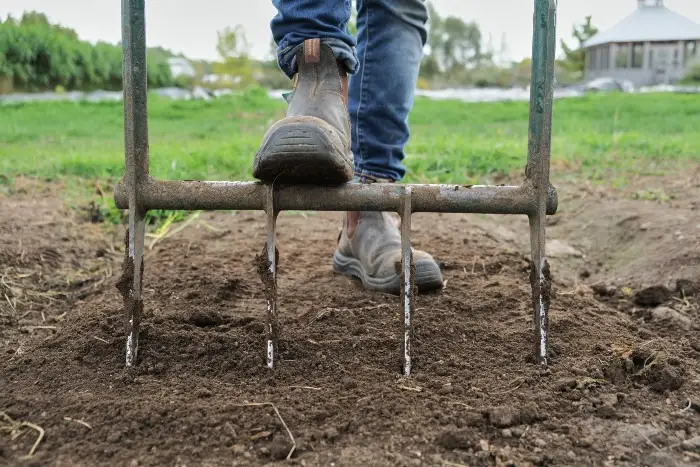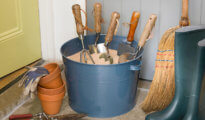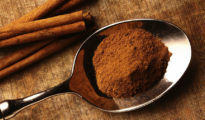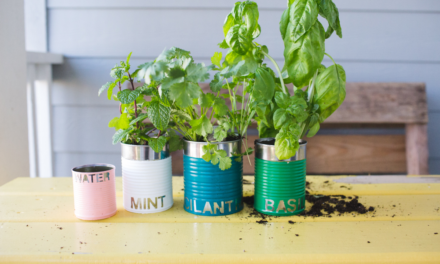The broadfork, also known as the grelinette or U-fork, is a versatile and efficient gardening tool that is perfect for the small-scale gardener, hobby farmer, or even the professional farmer. It is a tool that deserves a spot in every gardener's toolshed. In this blog post, we'll discuss the many benefits of using a broadfork, and provide you with a step-by-step guide on how to use one.

Benefits of a Broadfork
1. Soil Aeration: One of the main benefits of using a broadfork is that it can help to aerate the soil. Aeration is the process of introducing air into the soil, which helps to improve soil structure, increase water infiltration and drainage, and promote healthy root growth. The broadfork's long, sturdy tines are perfect for breaking up compacted soil and creating channels for air and water to penetrate the soil.
2. Reduced Soil Erosion: When you till your soil with a rototiller or plow, you can unintentionally cause soil erosion by disturbing the soil structure and increasing the risk of runoff. The broadfork, however, is a gentler tool that helps to preserve the soil structure and reduce the risk of soil erosion. By using a broadfork, you can create a stable and fertile soil environment that supports healthy plant growth.
3. Soil Fertility: The broadfork can help to improve soil fertility by mixing organic matter, such as compost or manure, into the soil. This organic matter provides essential nutrients to the soil and helps to increase soil fertility. The broadfork's long tines can penetrate deep into the soil, ensuring that the organic matter is evenly distributed throughout the soil profile.
4. Less Physical Strain: Traditional gardening tools like shovels and hoes can be hard on your body, especially if you're spending long hours in the garden. The broadfork is an ergonomically designed tool that can help to reduce physical strain and make gardening easier on your body. Its long handles and wide stance allow you to use your entire body to work the soil, rather than just your arms and back.
5. Versatility: The broadfork is a versatile tool that can be used for a wide range of gardening tasks. Whether you're preparing a new garden bed, breaking up compacted soil, or incorporating organic matter into the soil, the broadfork is a tool that can handle it all. Its simple and durable design makes it a reliable tool that can be used for many years.
How to Use a Broadfork
Step 1: Select the Right Broadfork There are many different types of broadforks available on the market, so it's important to choose the right one for your needs. Consider factors such as the width of the fork, the length of the tines, and the material of the handles. If you have a small garden, a narrower fork may be more suitable. If you have compacted or clay soil, you may need a broadfork with longer tines.
Step 2: Prepare the Soil Before using a broadfork, it's a good idea to water the soil or wait until after a rainstorm. Moist soil is easier to work with and reduces the risk of soil compaction.
Step 3: Insert the Broadfork Place the broadfork on the soil with the tines pointing down. Using your body weight, push the tines into the soil. If the soil is particularly hard or compacted, you may need to use a rocking motion to get the tines to penetrate the soil.
Step 4: Work the Soil Once the tines are fully inserted into the soil, pull back on the handles to break up the soil. You can use a rocking motion to help loosen the soil. Repeat this process every few feet until the entire area has been worked.
Step 5: Incorporate Organic Matter If you're using the broadfork to incorporate organic matter into the soil, you can sprinkle compost or manure on top of the soil after you've worked it with the broadfork. Then, use the broadfork to mix the organic matter into the soil.
Step 6: Smooth the Soil After you've finished using the broadfork, you may want to use a rake to smooth out the soil and prepare it for planting.
Step 7: Plant and Enjoy! With your soil properly aerated and enriched, you're ready to plant your seeds or seedlings. Enjoy the benefits of healthier, more productive plants thanks to your broadfork.
The Science Behind Soil Aeration
One of the primary reasons gardeners and farmers appreciate the broadfork is due to its ability to aerate soil. Soil aeration is critical, not just for the obvious reason of allowing plant roots to breathe, but for a host of other benefits:
- Microbial Activity: Healthy soil teems with microbial life – bacteria, fungi, protozoa, and more. These microscopic organisms play a crucial role in breaking down organic material, fixing nitrogen, and promoting plant health. A well-aerated soil provides these microorganisms the oxygen they need to thrive.
- Root Penetration: When soil is compacted, plant roots find it challenging to penetrate deep into the soil. This shallow rooting can lead to weaker plants that are more susceptible to drought and disease.
- Water Movement: Compacted soil leads to poor water penetration and increased runoff. Good aeration ensures that water can move freely through the soil profile, reaching the roots where it’s most needed.
Broadfork Design Variations
The market offers a plethora of broadfork designs tailored to various needs:
- Tine Material: Some broadforks come with stainless steel tines for durability, while others may use hardened steel for strength. The material you choose will depend on your soil type and the level of resistance you expect to encounter.
- Handle Material: While many traditional broadforks come with wooden handles, modern variations offer metal and even fiberglass handles. Each material offers a different weight and feel, which might be preferable depending on the gardener's strength and preference.
Techniques for Using a Broadfork
While the fundamental method of using a broadfork is straightforward, mastering the technique can yield even better results:
- Rocking Motion: Instead of just pulling back on the handles, a side-to-side rocking motion can be even more effective in breaking up tough, compacted soil.
- Depth Variations: Depending on the task at hand, you might not always need to insert the tines of the broadfork fully. For light aeration or when dealing with a shallow-rooted crop, a shallower penetration might suffice.
- Overlap Passes: For thorough soil aeration and mixing, make sure to overlap your broadforking passes. This ensures no section of the soil goes untreated.
Maintenance and Aftercare
A broadfork is a long-term investment, and with proper care, it can serve you for decades:
- Cleaning: After each use, remove any clinging soil from the tines. This not only keeps the tool in top condition but also prevents the transfer of soil-borne diseases.
- Sharpening: Over time, the tines might become blunt, especially if used on rocky soils. Periodically sharpening them ensures efficient soil penetration.
- Storage: Store your broadfork in a dry place to prevent rusting and handle degradation.
The broadfork is more than just a gardening tool; it's a testament to sustainable and organic farming practices that prioritize soil health. In the long run, using a broadfork not only enhances the health and yield of your plants but also contributes to the larger ecosystem by fostering a thriving underground world. Whether you're a home gardener or a professional farmer, understanding and mastering the broadfork can lead to bountiful harvests and a more harmonious relationship with the land.



















